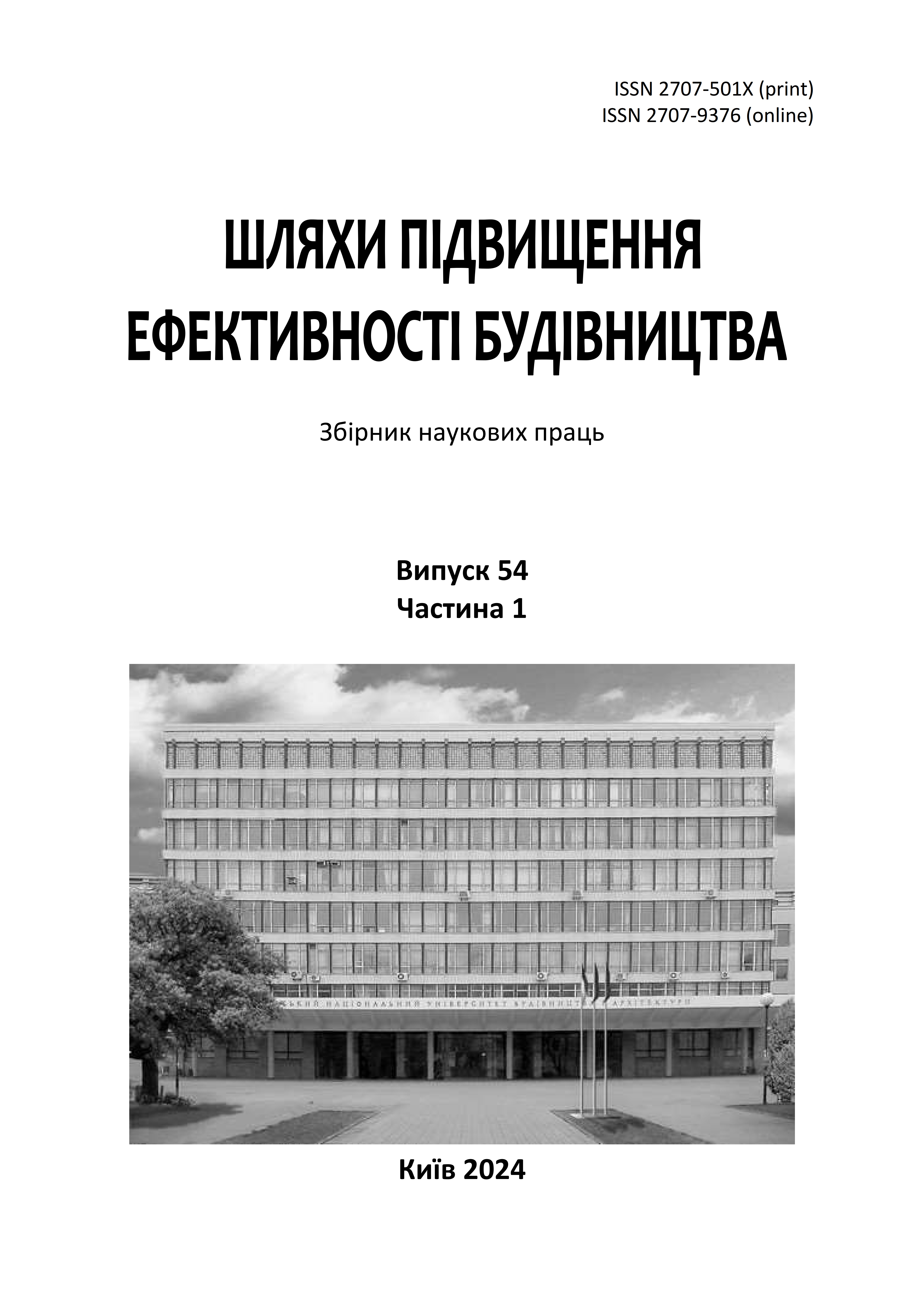Theoretical and applied tools using for optimization investment and construction projects
DOI:
https://doi.org/10.32347/2707-501x.2024.54(1).156-163Keywords:
construction, investments, investment construction project, optimization, construction project managementAbstract
The article provides for the possibility of using theoretical and applied tools for optimization of investment and construction projects.
The use of innovative methods through an engineering approach to the organization of construction consists in accumulating the results of scientific achievements, knowledge, careful study of external factors in order to find new ideas, new technologies and tools, which should contribute to obtaining better results in the implementation of construction projects throughout their entire life cycle, and also minimize risks for the investor. The analysis conducted allowed to identify the need for improving methods for assessing the reliability and optimizing the successful implementation of construction projects. This is especially relevant in conditions when increasing the efficiency of capital investments in construction projects requires improving economic relations in construction, strengthening contractual discipline, increasing the economic responsibility of builders and customers for the final results.
For the effective use, in the current economic conditions, of existing methods of construction planning and production organization, for a positive impact on the acceleration and efficiency of construction, it is necessary to include in these methods the consideration of the existing specific features of the construction industry. The options for the possible application of organizational and technological tools are considered, the results of the presented material can be used to solve practical problems of optimizing and improving project indicators in planning and managing investment and construction activity processes.
A professional approach to the tool for effectively solving the problems of developing construction production with optimal distribution of investments is an obvious necessity today. The need to create methods for solving problems related to increasing the efficiency of construction project implementation, minimizing project execution time, and maximizing profits, taking into account organizational, technological, economic factors and elements of the external environment, determines the relevance of this work.
References
Губський Б.В. Інвестиційні процеси в глобальному середовищі. К.: «Наукова думка», 1998. 500 с.
Zeltser R., Bielienkova O., Novak E., Dubinin D. Digiatal Transformation of Resource Logistics and Organizational and Structural Support of Construction. Science innovation. 2019, 15(5), 34-46. https://doi.org/10.15407/scine15.05.034
Кігель В.Р. Математичні методи прийняття рішень у ефективному підприємництві. К.: НАНУ, Інститут економіки, управління та господарського права, 1999. 288 с.
Крупка Я.Д. Прогресивні методи оцінки та обліку інвестиційних ресурсів. Тернопіль: Економічна думка, 2000. 354 с.
Доненко Д.І., Ярова Л.Ж., Іщенко О.С., Доненко І.В. Шляхи вдосконалення організаційно-технологічних моделей оцінки ефективності реалізації будівельних проектів. Будівельне виробництво. 2013. №. 55. С. 44-49.
Кравчуновська Т.С. Обґрунтування доцільності та ефективності реалізації проектів комплексної реконструкції житлової забудови. Строительство. Материаловедение. Машиностроение. 2013. Вип. 68. С. 173-177.
Мартиш О.О. Роль управління в досягненні необхідного рівня організаційно-технологічної надійності при реалізації календарних планів. Строительство, материаловедение, машиностроение. 2015. Вып. 82. С. 126-131.
Млодецький В.Р., Ценацевич Т.О. Обґрунтування раціонального рівня організаційно-технологічної надійності у будівельних проектах. Вісник Придніпровської державної академії будівництва та архітектури. Дніпро, 2015. № 9. С.46-53.
Downloads
Published
How to Cite
Issue
Section
License

This work is licensed under a Creative Commons Attribution 4.0 International License.
Authors who publish with this journal agree to the following terms:
- Authors retain copyright and grant the journal right of first publication with the work simultaneously licensed under a Creative Commons Attribution License that allows others to share the work with an acknowledgement of the work's authorship and initial publication in this journal.
- Authors are able to enter into separate, additional contractual arrangements for the non-exclusive distribution of the journal's published version of the work (e.g., post it to an institutional repository or publish it in a book), with an acknowledgement of its initial publication in this journal.
- Authors are permitted and encouraged to post their work online (e.g., in institutional repositories or on their website) prior to and during the submission process, as it can lead to productive exchanges, as well as earlier and greater citation of published work (See The Effect of Open Access).

